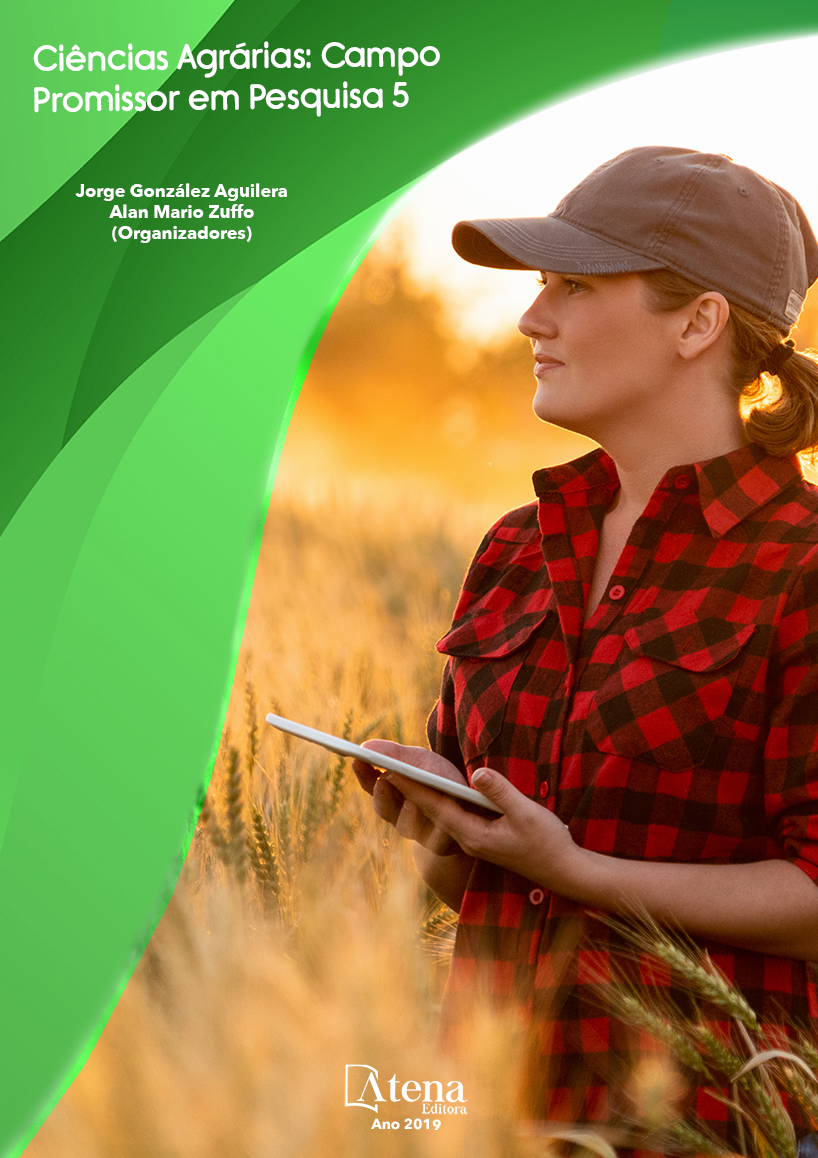
AVALIAÇÃO DA FERTILIDADE DO LATOSSOLO AMARELO TEXTURA MÉDIA SOB O EFEITO RESIDUAL DE ADUBAÇÃO EM PLANTAS DE “SORRISO DE MARIA” (ASTER ROX) NA REGIÃO DO NORDESTE PARAENSE
O cultivo de flores ainda é
caracterizado como sendo uma área de poucos
estudos científicos, principalmente com relação
à fertilidade do solo o que requer doses de
adubação ao início de cada produção. Com
isso, este trabalho teve por objetivo analisar
o efeito residual da adubação de macro e
micronutrientes em plantas de “Sorriso de Maria”
(Aster rox), cultivadas em função da técnica do
elemento faltante como proposta de diminuir
doses de adubação no solo, com a finalidade
de dar sustentabilidade a produção de flores.
O delineamento experimental foi o inteiramente
ao acaso (DIC), com 10 tratamentos (Test. –
Cal, Completo + Cal, Completo – Cal, ON+Cal,
OP+Cal, OK+Cal, OS+Cal, OMn+Cal, OCa-
Cal e OMg-Cal) e 5 repetiçõs, perfazendo um
total de 50 parcelas experimentais. Foi utilizouse
o substrato de Latossolo Amarelo Textura
média para avaliação do desenvolvimento
das plantas sob o efeito residual da adubação
realizada no primeiro corte de Aster. Não houve
diferença estatística entre os tratamentos para
os valores de altura planta, diâmetro do coleto e
número de folhas, quando avaliado no terceiro
corte de cultivo. No entanto, houve diferença
significativa entre os tratamentos relacionados
à Matéria seca e matéria fresca das plantas.
Sendo assim, a omissão de N, K, P, S, Ca, Mn e
Mg não influenciaram nas variáveis biométricas
das plantas o que caracteriza que o produtor
rural pode produzir flores de “Sorriso de Maria”
garantindo a sua sustentabilidade econômica e
social no sistema agrícola.
AVALIAÇÃO DA FERTILIDADE DO LATOSSOLO AMARELO TEXTURA MÉDIA SOB O EFEITO RESIDUAL DE ADUBAÇÃO EM PLANTAS DE “SORRISO DE MARIA” (ASTER ROX) NA REGIÃO DO NORDESTE PARAENSE
-
DOI: 10.22533/at.ed.1911920063
-
Palavras-chave: Biometria, exploração, Sorriso de Maria, Calagem.
-
Keywords: biometrics, exploration, mary smile, liming.
-
Abstract:
The cultivation of flowers is still
characterized as being an area of few scientific
studies, mainly with respect to the fertility of the
soil which requires doses of fertilization at the
beginning of each production. The aim of this
work was to analyze the residual effect of macro
and micronutrient fertilization on "Sorriso de Maria" (Aster rox) plants, cultivated as a
function of the missing element technique as a proposal to reduce fertilization rates in
the soil, with the purpose of giving sustainability to flower production. The experimental
design was completely randomized (DIC), with 10 treatments (Test - Cal, Completo
+ Cal, Completo - Cal, ON + Cal, OP + Cal, OK + Cal, OS + Cal, OMn + Cal, OCa
-Cal and OMg-Cal) and 5 repetitions, making a total of 50 experimental plots. It was
used the substrate of Yellow Latosol Average texture to evaluate the development of
the plants under the residual effect of the fertilization realized in the first cut of Aster.
There was no statistical difference between treatments for the values of plant height,
collection diameter and number of leaves, when evaluated in the third cropping cut.
However, there was a significant difference between treatments related to dry matter
and fresh matter of the plants. Therefore, the omission of N, K, P, S, Ca, Mn and Mg
did not influence the biometric variables of the plants, which characterizes that the rural
producer can produce "Sorriso de Maria" flowers, guaranteeing their economic and
social sustainability in the agricultural system.
-
Número de páginas: 15
- Alasse oliveira da silva
- Dioclea Almeida Seabra Silva
- Ismael de Jesus Matos Viégas
- Camily Ribeiro Fernandes
- HIAGO MARCELO LIMA DA SILVA


